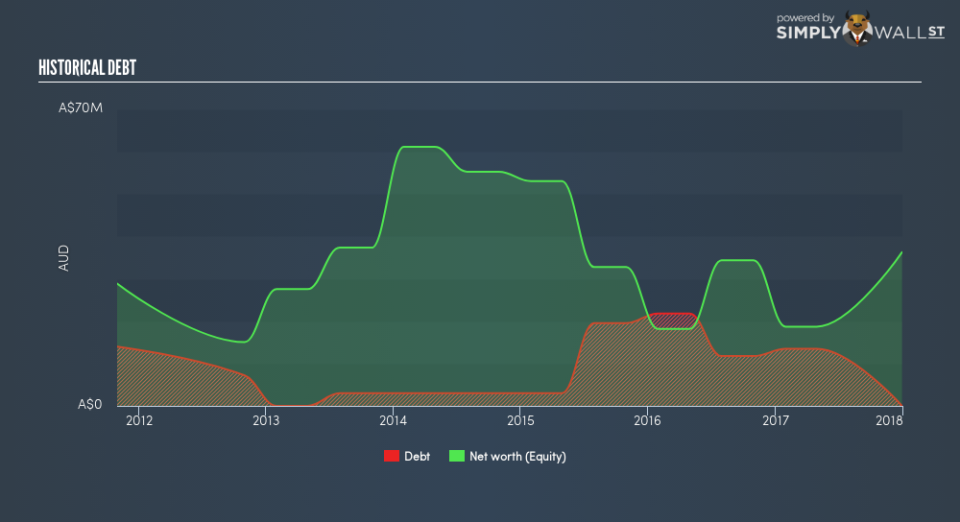Is eServGlobal Limited’s (ASX:ESV) Balance Sheet Strong Enough To Weather A Storm?

eServGlobal Limited (ASX:ESV), which has zero-debt on its balance sheet, can maximize capital returns by increasing debt due to its lower cost of capital. However, the trade-off is ESV will have to follow strict debt obligations which will reduce its financial flexibility. While zero-debt makes the due diligence for potential investors less nerve-racking, it poses a new question: how should they assess the financial strength of such companies? I will go over a basic overview of the stock’s financial health, which I believe provides a ballpark estimate of their financial health status.
See our latest analysis for eServGlobal
Is financial flexibility worth the lower cost of capital?
Debt funding can be cheaper than issuing new equity due to lower interest cost on debt. But the downside of having debt in a company’s balance sheet is the debtholder’s higher claim on its assets in the case of liquidation, as well as stricter capital management requirements. The lack of debt on ESV’s balance sheet may be because it does not have access to cheap capital, or it may believe this trade-off is not worth it. Choosing financial flexibility over capital returns make sense if ESV is a high-growth company. ESV delivered a negative revenue growth of -48.4%. While its negative growth hardly justifies opting for zero-debt, if the decline sustains, it may find it hard to raise debt at an acceptable cost.
Can ESV meet its short-term obligations with the cash in hand?
Since eServGlobal doesn’t have any debt on its balance sheet, it doesn’t have any solvency issues, which is a term used to describe the company’s ability to meet its long-term obligations. But another important aspect of financial health is liquidity: the company’s ability to meet short-term obligations, including payments to suppliers and employees. Looking at ESV’s most recent AU$10.8m liabilities, it appears that the company has been able to meet these obligations given the level of current assets of AU$16.5m, with a current ratio of 1.53x. Usually, for Software companies, this is a suitable ratio since there is a bit of a cash buffer without leaving too much capital in a low-return environment.
Next Steps:
Having no debt on the books means ESV has more financial freedom to keep growing at its current fast rate. This may mean this is an optimal capital structure for the business, given that it is also meeting its short-term commitment. Going forward, its financial position may be different. This is only a rough assessment of financial health, and I’m sure ESV has company-specific issues impacting its capital structure decisions. You should continue to research eServGlobal to get a better picture of the stock by looking at:
Historical Performance: What has ESV’s returns been like over the past? Go into more detail in the past track record analysis and take a look at the free visual representations of our analysis for more clarity.
Other High-Performing Stocks: Are there other stocks that provide better prospects with proven track records? Explore our free list of these great stocks here.
To help readers see past the short term volatility of the financial market, we aim to bring you a long-term focused research analysis purely driven by fundamental data. Note that our analysis does not factor in the latest price-sensitive company announcements.
The author is an independent contributor and at the time of publication had no position in the stocks mentioned. For errors that warrant correction please contact the editor at editorial-team@simplywallst.com.

 Yahoo Finance
Yahoo Finance 
